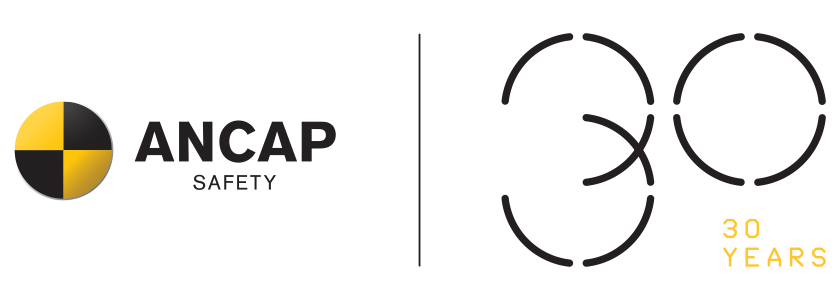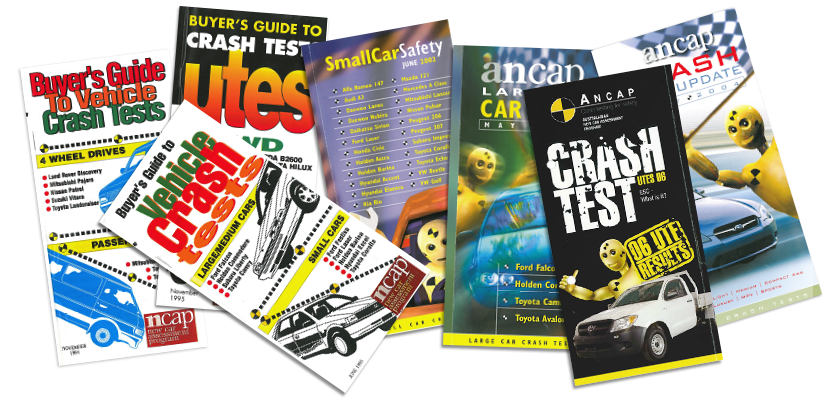How is vehicle safety changing?
Vehicles, and the technologies in them, continue to evolve. More and more technologically-advanced vehicles are entering the market each day.
Today's vehicles now go beyond the function of simply getting you from Point A to Point B. The automated technologies modern vehicles are now equipped with can assist you with key driving tasks such as braking and steering and can intervene in emergency situations to help you avoid or minimise the severity of a crash.
Vehicle safety is continually evolving.
The technologies being developed by vehicle manufacturers are improving every day. The test and rating criteria we apply are updated every three years to incorporate the latest safety technologies. This means that when you choose a five-star rated car with the latest datestamp, you are getting the safest vehicle possible.
What's new from 2023?
From January 2023 a number of new active safety system test scenarios are included in ANCAP's testing procedures with new safety features encouraged, and scoring adjusted to incentivise a higher level of safety.
Learn more about what's new from 2023...
Today's systems are there to assist the driver, not replace the driver.
Assisted and Automated Driving
It is important to note that the active safety technologies fitted to today's vehicles are not designed to replace the driver. Rather, they are being fitted – through ANCAP's encouragement – to assist you as the driver with the driving task and reduce the chance and/or severity of a crash.
These assistance systems offer basic standalone functionality such as lane-keeping and/or autonomous braking, which are designed to intervene only in critical situations. Over time, vehicle manufacturers will be including more and more technologies to their vehicles to allow more advanced assisted driving functions. These are the building blocks to full automation, but vehicles that drive themselves are still some time away.
To provide you with information on how these systems and technologies perform, ANCAP will begin to incorporate assessments of automated driving systems - starting with Level 1 and Level 2 systems - into its ratings from 2025. These will initially be Assisted Driving systems, that support the driver to drive safely in a range of highway, inter-urban and urban environments.
In addition, there will be a focus on Connected Vehicle systems, or V2X technologies, which allow the vehicle to share and receive data from other vehicles and road users about their location, speed and direction of travel. By sharing and receiving this data, connected vehicles provide assistance to the driver in a variety of scenarios, including lane merge assistance, overtaking assistance, intersection assistance and protection of vulnerable road users such as pedestrians and cyclists.
Levels of vehicle automation
Connected and automated vehicle technologies are categorised from Level 1 through to Level 5 by their level of driving automation. The automated systems available in cars sold today are Level 1 or Level 2 systems – designed to assist the driver. Examples include:
Adaptive cruise control
which controls the speed of the vehicle enabling it to keep a safe distance from the vehicle in front, and
Active lane centering
which helps keep the vehicle within its intended lane.
Some vehicle manufacturers have introduced models overseas with a Level 3 system called Automated Lane Keeping System (ALKS), which meet United Nations Regulation 157, also known as 'Traffic Jam Assist'. ALKS or other Level 3 systems are not yet available in Australia or New Zealand, but when they do arrive it is important to remember the driver must be prepared to take control of the vehicle at all times.
Highly and fully automated systems (Levels 4 and 5), where the vehicle performs all driving tasks and a human driver may not be required, are still many years away.

Step back in time
Now that you have an insight into what's coming, why don't you take a look back to see how ANCAP safety ratings have progressed over the last 30 years...
ANCAP was established in 1992 as the second New Car Assessment Program (NCAP) in the world, after the United States. Since then, the ANCAP safety rating program has evolved with progressive changes introduced to its rating system to enhance the safety of new cars offered to consumers in Australia and New Zealand and encourage continuous improvements from vehicle manufacturers.
Over the years, new tests have been introduced and existing ones enhanced. Minimum safety requirements have increased and more sophisticated testing and assessment methods developed.

Learn more about the changes to ANCAP safety ratings over time...
Large Utes.
Does size matter?
Light Trucks.
How do they compare?
Thinking electric?
Our future can be safe AND green.
Commercial vans.
Are you delivering on safety?
Stay in the know.
Sign-up for the latest ratings and news.
Ask an expert.
Your vehicle safety questions, answered!